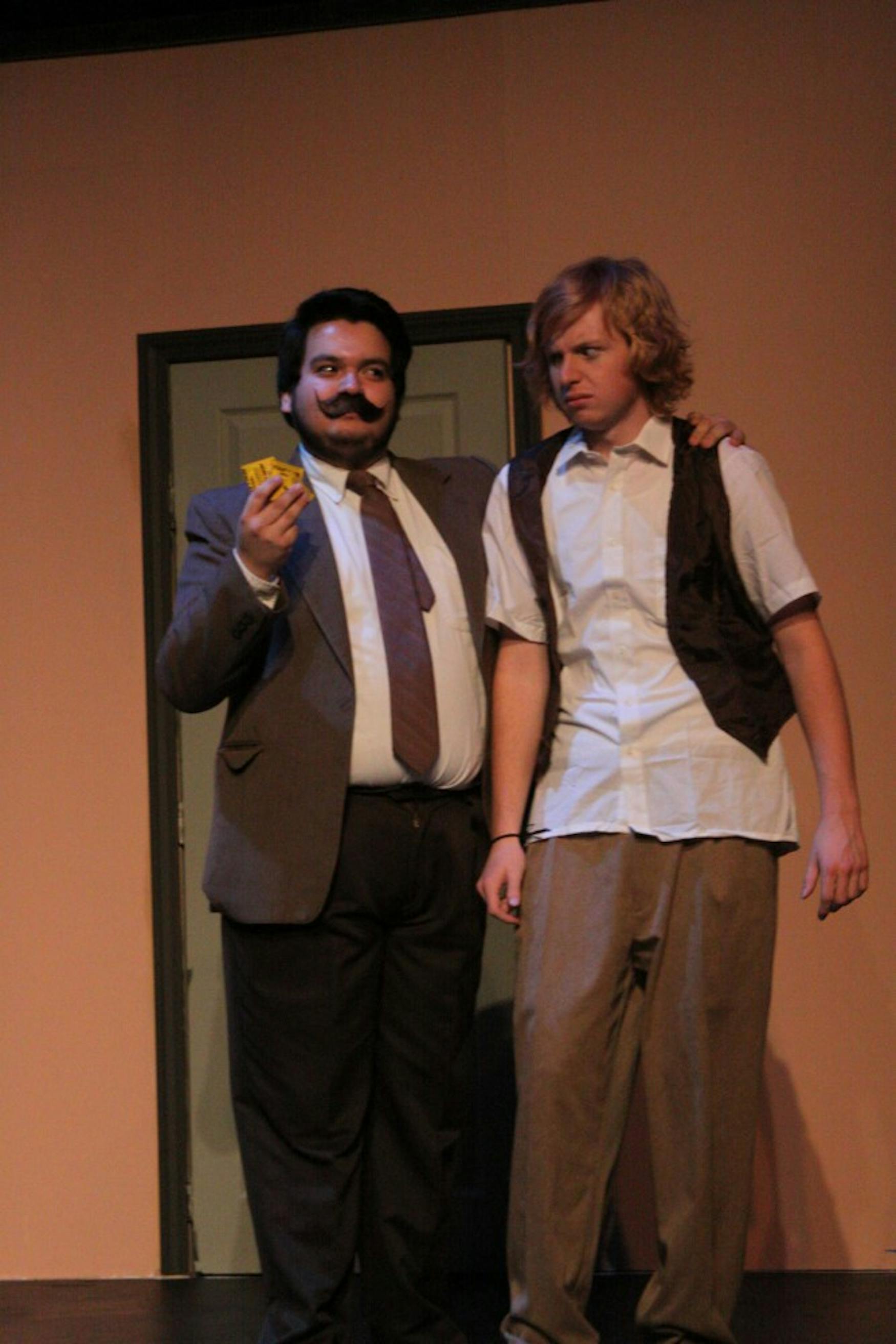Play makes good use of comedy, but drags
Tucked away in the corner of the stage sat a plain brown desk. With the houselights up, an actor in a dark brown suit calmly wrote at the desk as the audience filtered in. People slowly took stock of his presence, but the actor kept his eyes trained on his writing and did not acknowledge the audience. As the house lights dimmed, the play began; the man at the desk (Jose Castellanos ’18) introduced himself as the narrator and established the structure of the play.
Brandeis Hillel Theater Group staged its final performance of Neil Simon’s The Good Doctor, directed by Brian Dorfman ’16, on Sunday at 8 p.m., following three other shows earlier in the week. The show was broken into a series of vignettes that mirrored the stories that the narrator is writing. Each cast member played various characters whose sketches were strung together by the narrator’s monologues and introductions.
This unusual structure of the play complemented what was overall a very quirky show. The eight-person cast frequently broke the fourth wall by looking at the audience each time they said the words “doctor” or “good doctor.” The narrator’s friend’s wife (Jade Garisch ’15) broke the fourth wall by mentioning and being momentarily aware of her presence as a performer on a stage. During a scene in the first act, the narrator’s alter ego, a self-proclaimed master of seduction, commented on his friend’s wife’s beauty. He remarked that a woman like her belonged on a stage. When the wife learned of this compliment, she repeated the phrase “a stage?!” as she looked around edges of the stage. As she looked around the stage, she recognized her place as an actor in a play and signified this realization with a wink to the audience.
Sunday evening’s performance also featured some less deliberate breaks in character. The third vignette in the first act followed a woman with a toothache (Maggie Ziegel ’18) who got into a disagreement with her dubiously qualified dentist (Jade Garisch ’15). The pair’s conflict escalated and the two women found themselves wielding toothbrushes against each other like swords or light sabers. The characters knocked their toothbrushes behind them over the course of the fight before falling to the ground, a pose that allowed for a brief moment of quiet after the animated fight. In this moment, an apparently electric toothbrush was accidentally turned on, and it buzzed loudly enough for the audience to hear. Both women started laughing almost uncontrollably at the mistake, and the audience followed. Ziegel was supposed to transition into a serious plea to God for a healthy recovery from dental surgery, but she struggled to get the words out through her laughter. The toothbrush continued to buzz until the scene ended; a member of the stage crew tried to look for the toothbrush after the scene finished but struggled to do so in the darkness, which elicited even more laughter from the audience.
The play had its comedic moments, and many of the scenes in the first act were particularly strong. However, length was one of the play’s major shortcomings the production ran for two and a half hours (including a ten-minute intermission), which in my experience—is longer than most Broadway comedies, including The Book of Mormon. From a viewer’s perspective, it seemed like the play’s younger cast of mostly underclassmen (only one cast member was a senior) struggled to hold the audience’s attention. The play’s length made the longer, slower-paced scenes at the end of the second act more challenging to focus on.
The characters also frequently switched or dropped their accents. Most of the scenes took place in Russia, so it would be expected that they would have Russian accents. The narrator held his accent pretty reliably in the first act, but it had fallen by the second act. Characters in scenes set in Russia either lacked accents, used other countries’ accents or switched between Russian accents and American ones. It was challenging to determine whether or not these changes were intentional. The fact that characters within a vignette spoke with different accents made the scenes harder to follow. More consistent accents or clearer transitions between accents would have clarified the play’s setting and put the focus back on the plot.
The Good Doctor was an exciting play that detailed a variety of comedic situations. Its many well-acted scenes deserve their due. The show’s clever plotlines and interesting blocking choices, such as having the narrator lie on the floor and mime words as his friends quoted him, helped enhance the quality of the play. Breaking character and having prop malfunctions are almost unavoidable, and while some audience members may disapprove of these unscripted moments, most audience members only saw them as reasons to laugh harder.



Please note All comments are eligible for publication in The Justice.